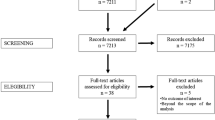Abstract
Introduction
Brain arteriovenous malformations (bAVMs) present complex challenges in neurosurgery, requiring precise pre-surgical planning. In this context, 3D printing technology has emerged as a promising tool to aid in understanding bAVM morphology and enhance surgical outcomes, particularly in pediatric patients. This study aims to assess the feasibility and effectiveness of using 3D AVM models in pediatric bAVM surgery.
Methodology
The study was conducted at Great Ormond Street Hospital, and cases were selected sequentially between October 2021 and February 2023. Eight pediatric bAVM cases with 3D models were compared to eight cases treated before the introduction of 3D printing models. The 3D modelling fidelity and clinical outcomes were assessed and compared between the two cohorts.
Results
The study demonstrated excellent fidelity between 3D models and actual operative anatomy, with a median difference of only 0.31 mm. There was no statistically significant difference in angiographic cure rates or complications between the 3D model group and the non-3D model group. Surgical time showed a non-significant increase in cases involving 3D models. Furthermore, the 3D model cohort included higher-grade bAVMs, indicating increased surgical confidence.
Conclusion
This study demonstrates the feasibility and efficacy of utilizing 3D AVM models in pediatric bAVM surgery. The high fidelity between the models and actual operative anatomy suggests that 3D modelling can enhance pre-surgical planning and intraoperative guidance without significantly increasing surgical times or complications. Further research with larger cohorts is warranted to confirm and refine the application of 3D modelling in clinical practice.






Similar content being viewed by others
References
Morgan MK, Davidson AS, Assaad NNA, Stoodley MA (2017) Critical review of brain AVM surgery, surgical results and natural history in 2017. Acta Neurochir 159:1457–1478
Gross BA, Storey A, Orbach DB et al (2015) Microsurgical treatment of arteriovenous malformations in pediatric patients: the Boston Children’s Hospital experience. J Neurosurg Pediatr 15:71–77
Johnson AB, Richter GT (2019) Surgical considerations in vascular malformations. Tech Vasc Interv Radiol 22:100635
de Oliveira E, Tedeschi H, Siqueira MG et al (1994) Anatomic principles of cerebrovascular surgery for arteriovenous malformations. Clin Neurosurg 41:364–380
AlHamzah M, Hussain MA, Greco E et al (2022) Trends in operative case volumes of Canadian vascular surgery trainees. J Vasc Surg 75:687-694.e3
Park C-K (2022) 3D-printed disease models for neurosurgical planning, simulation, and training. J Korean Neurosurg Soc 65:489–498
Dong M, Chen G, Li J et al (2018) Three-dimensional brain arteriovenous malformation models for clinical use and resident training. Medicine 97:e9516
Schlegel L, Ho M, Fields JM et al (2022) Standardizing evaluation of patient-specific 3D printed models in surgical planning: development of a cross-disciplinary survey tool for physician and trainee feedback. BMC Med Educ 22:614
Thawani JP, Pisapia JM, Singh N et al (2016) Three-dimensional printed modeling of an arteriovenous malformation including blood flow. World Neurosurg 90:675-683.e2
Bae JW, Lee DY, Pang CH et al (2021) Clinical application of 3D virtual and printed models for cerebrovascular diseases. Clin Neurol Neurosurg 206:106719
Dong M, Chen G, Qin K, Ding X, Zhou D, Peng C, Zeng S, Deng X (2018) Development of three-dimensional brain arteriovenous malformation model for patient communication and young neurosurgeon education. Br J Neurosurg 32(6):646–649. https://doi.org/10.1080/02688697.2018.1424320. PMID: 29334259
Mashiko T, Otani K, Kawano R et al (2015) Development of three-dimensional hollow elastic model for cerebral aneurysm clipping simulation enabling rapid and low cost prototyping. World Neurosurg 83:351–361
Weinstock P, Prabhu SP, Flynn K et al (2015) Optimizing cerebrovascular surgical and endovascular procedures in children via personalized 3D printing. J Neurosurg Pediatr 16:584–589
Hak J-F, Boulouis G, Kerleroux B et al (2022) Pediatric brain arteriovenous malformation recurrence: a cohort study, systematic review and meta-analysis. J Neurointerv Surg 14:611–617
Pepper J, Lamin S, Thomas A et al (2022) Clinical features and outcome in pediatric arteriovenous malformation: institutional multimodality treatment. Childs Nerv Syst. https://doi.org/10.1007/s00381-022-05800-4
Nikoubashman O, Di Rocco F, Davagnanam I et al (2015) Prospective hemorrhage rates of cerebral cavernous malformations in children and adolescents based on MRI appearance. AJNR Am J Neuroradiol 36:2177–2183
Sattari SA, Yang W, Xu R et al (2022) Natural history and treatment of deep-seated brain arteriovenous malformations in pediatric patients. J Neurosurg Pediatr 30:578–585
Lv X, Jiang C, Wang J (2020) Pediatric intracranial arteriovenous shunts: advances in diagnosis and treatment. Eur J Paediatr Neurol 25:29–39
Hong S, Ogiwara H (2019) Long-term outcomes in pediatric unruptured brain arteriovenous malformation treated by nonconservative management: a single center analysis. Childs Nerv Syst 35:1363–1369
Author information
Authors and Affiliations
Contributions
LS wrote the methodology section about the 3D printing methods and helped with the figures related to that AS, DS and GJ wrote the article KS helped with the selection of the images and analysis of the MRI FR and AR helped with the angiographic figures and analysis of the postop images of the cases
Corresponding author
Ethics declarations
Conflict of interest
The authors declare no competing interests.
Additional information
Publisher's Note
Springer Nature remains neutral with regard to jurisdictional claims in published maps and institutional affiliations.
Rights and permissions
Springer Nature or its licensor (e.g. a society or other partner) holds exclusive rights to this article under a publishing agreement with the author(s) or other rightsholder(s); author self-archiving of the accepted manuscript version of this article is solely governed by the terms of such publishing agreement and applicable law.
About this article
Cite this article
Saenz, A., Smith, L., Seunarine, K. et al. Implementation of 3D modelling to improve understanding and conceptualisation of arteriovenous malformation (AVM) morphology for the execution of safe microsurgical excision of complex paediatric AVMs. Childs Nerv Syst (2024). https://doi.org/10.1007/s00381-024-06421-9
Received:
Accepted:
Published:
DOI: https://doi.org/10.1007/s00381-024-06421-9




